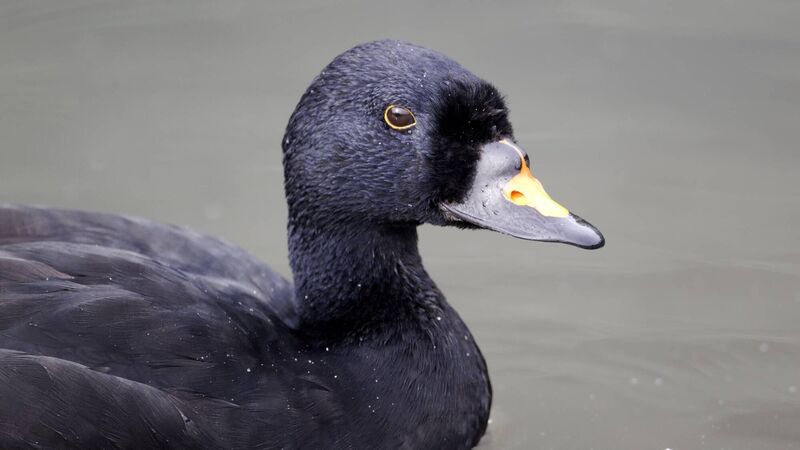Richard Collins: Our only 'all-black' duck — increased sightings of the common scoter

A male common scoter, Melanitta nigra: this is our only all-black duck
The common scoter is our only all-black duck. ‘Rafts’ of scoters spend the winter off our shores, diving for molluscs out beyond the breaking waves. But their numbers have been declining here and in Britain.
Climate change isn’t helping. Global warming may force our breeding scoters to shift northwards.
Scoters are part-time seabirds, with legs positioned towards the rear of their bodies, the better to swim and dive. They open their wings underwater, although they don’t actually ‘fly’ during dives the way puffins do.
As the nesting season approaches, scoters shed their seabird pretensions and become ‘normal’ ducks. They don’t nest on cliffs like true ocean-dwellers, but do so inland. It’s an effective strategy; scoters breed at age two, producing about seven eggs. Seabirds are at least four when they lay for the first time, and most produce only a single egg annually.
Whereas male and female seabirds look alike, the dress-codes of most duck species differ between the sexes. Female scoters aren’t black, but dark brown with a pale patch on the head.
There are also lifestyle differences; seabird partners go their separate ways in winter but come together again to breed the following spring. Scoters, however, are only seasonally monogamous; ‘marry well and marry often’ is their maxim. Drakes, according to The Birds of the Western Palearctic, "show promiscuous tendencies", attempting to mate with females other than (their) mate.
While seabird partners share household chores equally, female scoters build the nest and incubate the eggs without any help from their partners. No self-respecting seabird wife would put up with that!
Birdlife International estimates that about 1.6 million common scoters remain in Arctic and sub-Arctic regions. Those nesting in Ireland are the most southerly of the species’ range. Shallow coastal waters, some as far south as Morocco, are their winter haunts. Oil spills are a threat and there are worries about the impact of off-shore windfarms.
A paper in the latest edition of Irish Birds offers just a glimmer of hope for our besieged scoters: ornithologists Jacky Hunt, Marie Louise Heffernan and Sean Kelly assess the health of the Irish scoter breeding-population. They revisited the lakes where common scoters were recorded during the 2012 breeding season — and an additional one, Lough Gara, where scoters were seen recently.
Each lake was surveyed from a boat which followed the shoreline and encircled the islands. Up to 38 scoters were recorded on Lough Corrib, seven on Lough Ree, four on Lough Arrow, and one at Loughs Conn and Cullin. There were no scoters at Lough Gara.
Counts of ducklings were carried out in late July and August at the locations where pairs had been seen during the pre-breeding survey. There were eight broods on Lough Corrib, five on Ree, none elsewhere.
The numbers have increased from 39 pairs in 2012 to 50 pairs in 2020. "While this trend is positive, the population remains far below the 100 pairs recorded in 1995," the authors say.
It could be worse. "Learn from yesterday, live for today, hope for tomorrow," said Albert Einstein.








